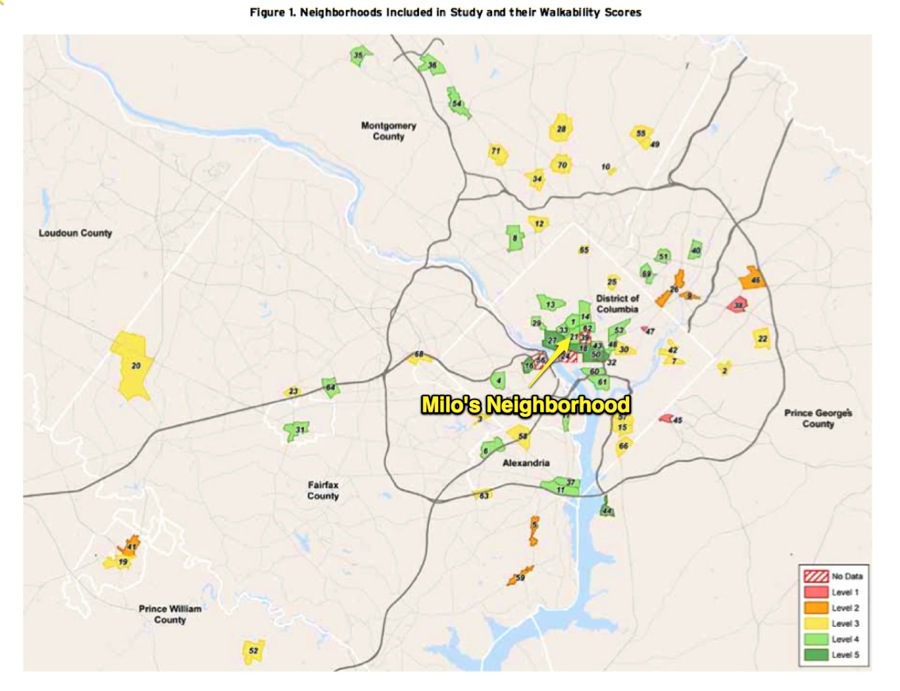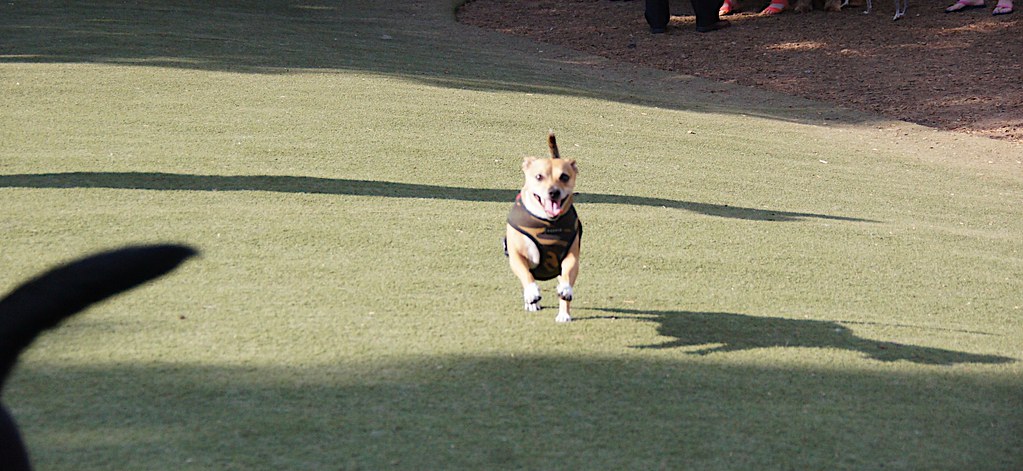I know it’s Thursday, but it’s my RSS feed and I can post whenever I want – Photo Friday is approximately every Friday 🙂
This week’s photograph is of Milo. I am his dogfather and get to dogsit him from time to time.
I’m going to be honest – I didn’t finish watching HBO and Kaiser Permanente’s “Weight of the Nation” when it was broadcast in May, so Milo and I finished watching it together, after I took this picture of him at the dog park (Which was also published in Metropolitan Washington DC blog WeLoveDC.com ). I was struck by the statement in the show, “Poor people have more problems than not having enough money,” when they showed families who were taking their children to parking lots in the evenings because there was no place to play.
Milo was at the center (he was the cover dog) of a slightly sensational story in Washington, DC, last year. The title says a lot: Myopic Little Dog-Loving, Cafe-Dwelling Snowball Throwers: DCist. If you read it you can see one side of the discussion about community conditions. Weight of the Nation tells a different, sadder story, about how community conditions conspire to prevent good health.
I decided to do a little research, and I found out that Milo lives in one of the most walkable areas of the United States. A great study of this metropolitan area (Walk this Way:The Economic Promise of Walkable Places in Metropolitan Washington, D.C. | Brookings Institution) shows that the transportation costs are lower in his neighborhood, economic performance, and housing costs are higher. What this means is that a resident living in a less walkable part of Washington, DC, has higher transportation costs, lower housing costs, and poorer economic performance, both of which conspire to keep them from being able to move to an area of greater walkability, to have economic vitality, to be healthier. These areas also have less parks, and less dog parks. Here’s a map of a sample of Washington, DC’s walkability, and a map of our dog parks is visible here, on the Washington Post Web Site. Information about DC’s Dog Park Program is here.

Washington, DC Neighborhoods and Walkability Scores, click to enlarge see: Walkable Places in Metropolitan Washington, DC
As the study shows, and as you can see visually, there is an equity issue:
Level 5 places contain 3.4 to 3.6 times more parks on average than do places with fair or poor walkability.
I walked one of the transitional neighborhoods in Washington and took photographs (Photo Friday: Resurgence of H Street, NE, Washington, DC | Ted Eytan, MD) when Milo’s media appearance was going on and asked, “Is it true that people that live here don’t want dog parks also?” Since Milo watched Weight of the Nation with me, I’m going to let him answer that question.

“Everyone Deserves a Dog Park” View 2012 Milo | 2012-06-15 18-29-32 on Flickr.com
To keep things more organized, I’m going to write a separate post on the Brookings study. Watch for it. In the meantime feel free to add your comments.

2 Comments
Wow..I never thought that a dog would teach me something.
As a person living in a highly walkable neighborhood in Oakland, California (Rockridge) I pay a stiff financial fee for my dynamic treadmill. Entertaining the thought of moving from this neighborhood brings up large quality of life issues that go beyond saving money each month. I understand intuitively how a move to a car oriented neighborhood will have many repercussions that are worth fighting (and paying) against. I guess my side projects better pay off if I want to stay healthy 😉
[…] Ted Eytan, MD e-health. patient empowerment. diversity. Washington, DC. Skip to content HomeAboutPortfolioContactSubscribe to UpdatesDiscussionMy Jacket « Photo Friday: The Social Determinants of Milo […]